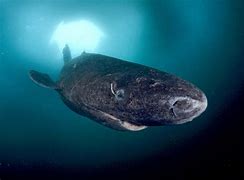Top 10 Animals With The Longest Lifespan

Some marine, reptile, and bird species live very long lives while some animals have short lifespan. They can live up to 500 years, up to 100-200 years. Find out which animals live the longest by reading on.
Despite the fact that humans can live up to 100 years, compared to the hundreds or even millennia that some animals can live, and some animals can even slow down or stop aging, this is still a very short period of time.
It is not unheard of for a marine animal to live for a thousand years—or even forever. In the meantime, a human could only hope to live to 100. It turns out that a combination of immobility and a slow rate of growth is the key to longevity.
An organism that is nearly immortal can be found in the environment of the deep sea.
In general, terrestrial animals live shorter lives than marine ones. One reason is that the ocean is a stable environment, and the less likely it is that you will die from an accident the deeper you go.
Top 10 Animals With The Longest Lifespan
- Immortal Jellyfish: More Than 700 Million Years
- Hydra-potentially Immortal: Live Forever
- Glass sponge: Life Span of 10,000 Years or More
- Black Coral: More Than 4,000 Years
- Greenland Shark: 300-500 Years
- Clams (ocean quahogs): 200-500 Years
- Tubeworms: 300+ Years
- Freshwater Pearl Mussel: 250+ Years Old
- Bowhead Whale: More than 200 years old
- Rougheye Rockfish: 200 Years Old
1. Immortal Jellyfish: More Than 700 Million Years

READ ALSO » Top 10 Shortest Marriage Lifespan In The World
Turritopsis's nutricula, which date back more than 700 million years, are well-known for their ability to regenerate after damage or aging. They are therefore referred to as biologically immortal.
They have traveled the seas and oceans for more than 700 million years. Jellyfish typically live for up to twenty years. They move freely thanks to their jelly-like bell and tentacles, which they use to ensnare prey. While some contain a lethal toxin, others are safe for humans.
2. Hydra-potentially Immortal: Live Forever

Hydra are a group of soft-bodied, small invertebrates that resemble jellyfish in some ways. Hydras, like Turritopsis dohrnii, have the capacity to live indefinitely. Live Science previously reported that hydras do not show signs of deterioration as they get older.
Stem cells make up the majority of these invertebrates and are constantly regenerating through duplication or cloning. In the wild, hydras can't live forever because of diseases and predators, but if there were no external threats, they might live forever.
3. Glass sponge: Life Span of 10,000 Years or More

Sponge Lifespan of 10,000 Years or More Just like corals, sponges are made of animal colonies and live a long time. Glass sponges are the sponges that live the longest on the planet. Members of this species, named for their glass-like bones, are frequently discovered in the deep ocean, according to NOAA. According to a 2012 study that was published in the journal Chemical Geology, the age of a glass sponge belonging to the species Monorhaphis chuni was estimated to be approximately 11,000 years. Some species of sponge may be able to survive for even longer.
4. Black Coral: More Than 4,000 Years

More than 4,000 years ago, invertebrate polyps, which are exoskeletons, gave rise to corals, which resemble vibrant underwater plants and rocks. These polyps cause the structure of the coral exoskeleton to expand over time by repeatedly reproducing and producing a genetically identical replacement. Since corals are made up of many identical individuals rather than being a single organism like Greenland sharks or ocean quahog clams, their longevity is more of a team effort.
Deep-water black corals (Leiopathes sp.) can live for hundreds of years or longer than other corals. are one of the species that live the longest. According to a previous Live Science post, the estimated age of black coral samples found off the coast of Hawaii is 4,265 years.
5. Greenland Shark: 300-500 Years
READ ALSO » Top 10 Most Longest Life Span Animals In The World
The Greenland shark is a member of the somnios family and lives between 300 and 500 years deep in the Arctic Ocean. The sharks can live in water, grow up to 24 feet in length, and grow about 0.5 to 1 cm per year. They are the only sharks that can live year-round in the Arctic at temperatures between 7 and -2 degrees Celsius. Since the majority of sharks are thermophilic, this is very strange. The greatest indicator for sharks is the animal's 100-200-year lifespan. The creature eats all living things and doesn't care what it eats. The Greenland shark's maximum age that could be determined is 392 years. The eye lens was subjected to radiocarbon testing for the purposes of the studies. Probably the longest-living vertebrate is the Greenland shark.
6. Clams (ocean quahogs): 200-500 Years

The ocean quahog (Arctica islandica) is a bivalve mollusk that can live for 200 years.13 We know this because we can measure the age marks that are formed in the quahog's valves, which indicate that it typically lives for 100 years.
The ocean quahog has a wide range, ranging from Iceland, the Shetland Islands, and Cadiz, Spain, to the east coast of North America. The filter feeders live on microscopic algae and bury themselves in the ocean floor.
7. Tubeworms: 300+ Years

Tube worms (Lamellibrachia luymesi), which are colorful deep-sea creatures, have been estimated to live between 170 and 250 years. They live along ocean floor hydrocarbon cold seep vents.
The Lamellibrachia is different from other creatures that live in vents because it grows slowly throughout its life to a length of more than six feet. It occurs throughout the Atlantic Ocean, particularly in the Gulf of Mexico basin's shallow areas.
8. Freshwater Pearl Mussel: 250+ Years Old

Freshwater pearl mussels (Margaritifera margaritifera), which have been around for more than 250 years, remove food particles from the water. They mostly live in rivers and streams and are common in North America, including the United States and Canada. According to the World Wildlife Fund, the oldest freshwater pearl mussel ever found was 280 years old. These invertebrates' long lives are aided by their slow metabolism.
Freshwater pearl mussels are a threatened species. According to the International Union for the Conservation of Nature (IUCN), a number of human-caused problems, such as damage to and alteration of the river habitats on which they depend, are causing a decline in their population.
9. Bowhead Whale: More than 200 years old

With lifespans of more than 200 years, bowhead whales are among the world's longest-living mammals and one of the featured species on our list of the top 10 longest-living animals.
READ ALSO » Top 10 Countries With The Longest And Shortest National Anthem
This species is associated with ice floes and mostly occurs in the Arctic. The ice's movement patterns are affected by the ice's melting and freezing. With their massive skulls and strong bodies, bowhead whales are able to break through sea ice up to seven inches thick. Adult bowheads are completely black, with the exception of the white and clearly upturned front portion of the lower jaw.
They can leap completely out of the water despite growing up to 60 feet long. By opening their lips and straining plankton from the surface, water column, or seafloor, bowheads use their baleen to filter their food.
10. Rougheye Rockfish: 200 Years Old

Other fish, like the rough-eyed rockfish, have been known to live nearly 200 years.
The diverse life spans of rockfish provided ideal conditions for studying longevity genetics.
